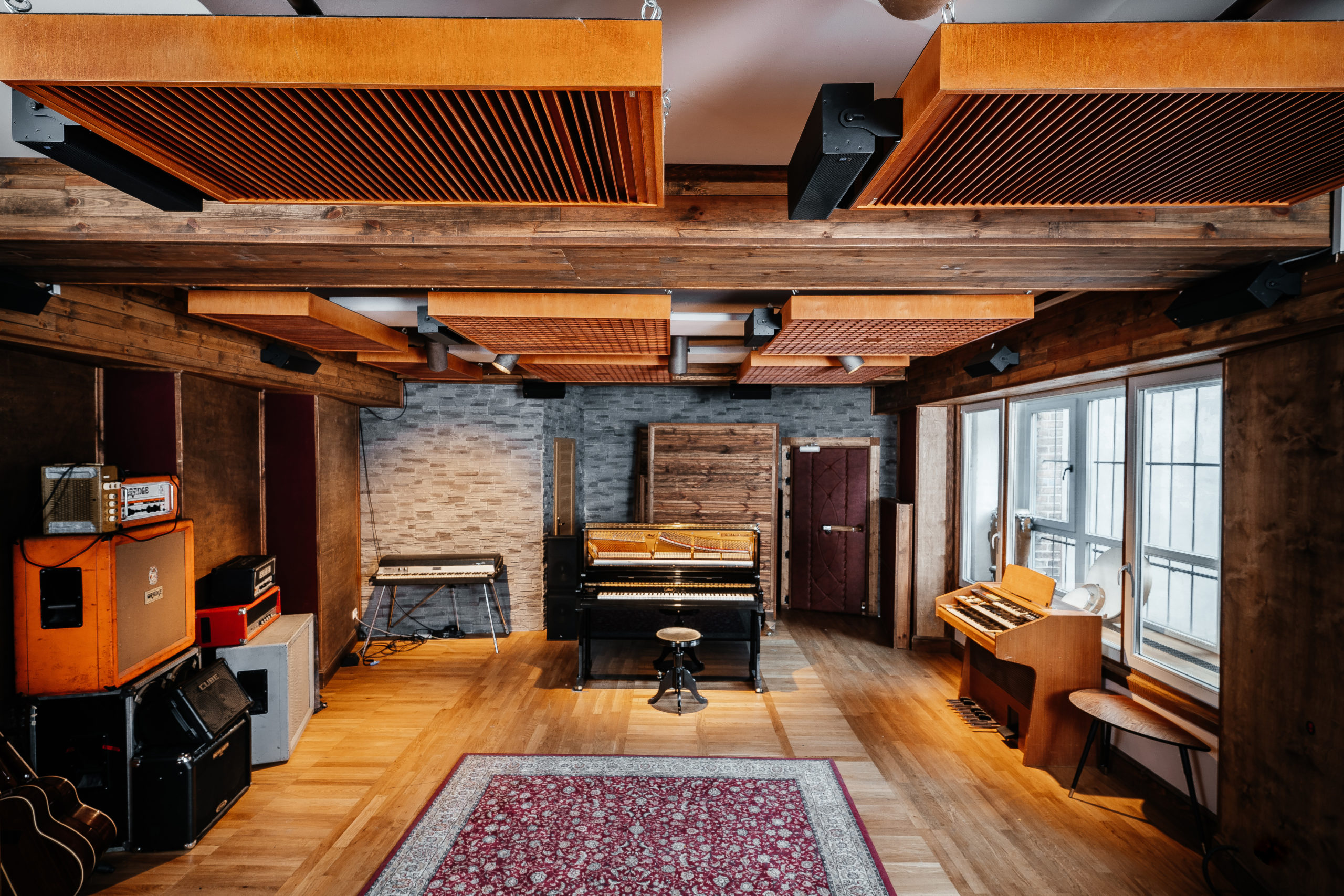Meyer Sound Spacemap Go Expands Creative Palette for Mouse on Mars

BEWAKE STUDIOS in Berlin has become the first recording facility to install a multichannel monitoring system fully outfitted with Spacemap Go, Meyer Sound’s breakthrough tool for spatial sound design and mixing. By offering this unique capability, BEWAKE promises to become a magnet for electronic musicians and sound artists seeking a laboratory for developing spatial sound designs that can be quickly scaled up for live performances in clubs, galleries and festival venues.
The installation of Spacemap Go was prompted by German electronic music icons Jan Werner and Andi Toma, who have transcended genres and redefined artistic conventions since 1994 with both their Mouse on Mars duo as well as individual projects. They have been in residence at BEWAKE STUDIOS since late 2018, and have occupied an exclusive sub-rented space and operated under the moniker Paraverse Studio. Their facility has a separate connection to the 50 square meter main recording room — where Spacemap Go is available — which is shared with BEWAKE’s other clients.
“Andi and Jan first experienced an earlier version of Spacemap Go at Moogfest two years ago, which started an ongoing relationship with Meyer Sound,” notes Adam Kesselhaut, the studio’s co-founder and managing director as well as a producer and songwriter. “That eventually led to the installation of Spacemap Go here. Because of the virus restrictions they have mostly been using it for their own projects, but they have been developing content so we expect they will use that in small events, inviting a few select people. I know they are really itching to get going with Spacemap Go, to make some cool, crazy stuff and get other artists in here to experience it.”
Studio co-founder and producer/engineer Martin “Lucky” Waschkowitsch found time to experiment with Spacemap Go and the results exceeded his expectations.
“To be honest, I was surprised that it works so well,” he says. “I was expecting phase issues as you walk around the room, but I didn’t hear them. You point at the sound on the screen, and where it is actually happening in the room is far more accurate than I would have thought. The effect is really spot on.”
The Meyer Sound loudspeaker complement comprises 14 UP-4slim compact self-powered loudspeakers bolstered by two USW-210P compact subwoofers for potent low end. Spatial mixing is effected by two Galileo GALAXY 816 Network Platforms under the control of the free Spacemap Go app for iPad. The system was installed and commissioned under the supervision of Ianina Canalis, Meyer Sound’s Berlin-based application architect, spatial audio specialist.
“For us it really makes sense to have access to a spatial sound setup in the studio,” explains Jan Werner, speaking on behalf of the Mouse on Mars duo. “You don’t want to go into a venue with what was a stereo mix and then have to take it all apart and adjust it after you get there. You want to start mixing spatially in the studio, so you are listening that way from the beginning, in the eventual environment for the music.”
Werner cites their current focus on developing a spatial performance at the CTM Festival scheduled for 2021 in Berlin, both online and in-person. “In the studio we have 16 speakers in a room of about 50 square meters, while at CTM the venue will be about 1,600 square meters. But Spacemap Go intelligently arranges the sounds being reproduced in the same spatial coordinates, even if you are using many more loudspeakers. The scaling works very well, so we expect to have everything ready even in the short time allowed to prepare on site.”
Werner also likes the Spacemap Go interface and the way it works seamlessly with their Logic DAW via the OSCar plug-in. “It’s very unpretentious,” he notes. “It’s hands-on so you don’t get lost in some esoteric blur. It transcends itself as a tool, and whatever you want to do with your artistic vision, it will help you do it.”
“Just having the system here makes us deal with sound differently already,” he continues. “It’s a new freedom you have inside your head. I feel like this whole palette of formats has just exploded. Now I know I can open up sounds in space. My whole mindset about going into a production has changed just knowing we can use spatial audio.”
Although many public performances are on hold, BEWAKE’s “Lucky” Waschkowitsch believes that the interim period will provide time for more creativity-in-waiting at his studio. “I think this will be highly successful, and you will see musicians and sound artists creating their spatial mixes in the studio, much like cinema sound is mixed for theatres. It just needs the courage to believe in it, and for venue owners to start equipping their rooms with this system. We may be ahead of the curve for now, but I believe it will happen.”


